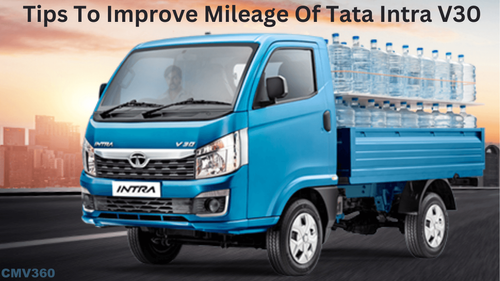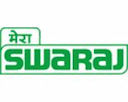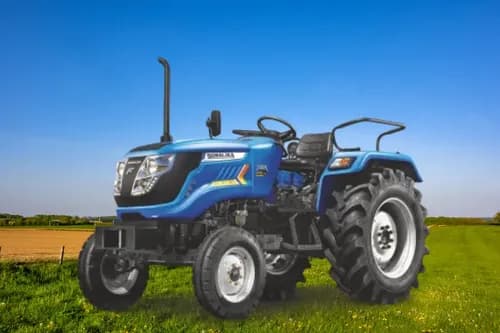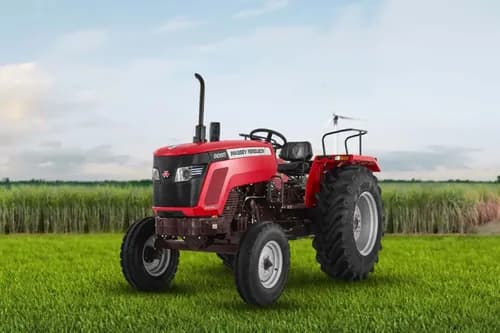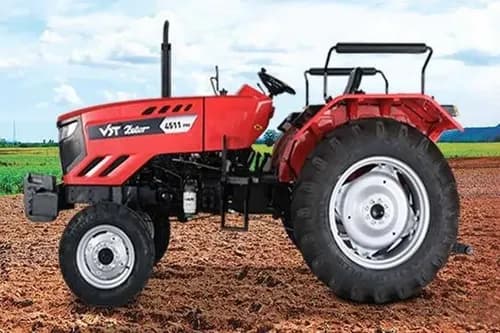Ad
Ad
Ad
Pradhan Mantri Awas Yojana (PMAY) – A Complete Overview
The Pradhan Mantri Awas Yojana (PMAY) is a housing scheme launched by the Government of India in 2015. The scheme aims to provide affordable housing to the economically weaker sections and low-income groups of society. The scheme is being implemented by the Ministry of Housing and Urban Affairs and is being executed through various state governments and Union Territories.

The PMAY has two components, the Pradhan Mantri Awas Yojana - Gramin (PMAY-G) and the Pradhan Mantri Awas Yojana - Urban (PMAY-U). The PMAY-G targets the rural population, while the PMAY-U targets the urban population.
Under the PMAY-G, the government aims to construct around 2 crore houses in rural areas by 2022. These houses will be constructed using eco-friendly technologies and will be equipped with basic amenities such as toilets, drinking water, and electricity. The government will provide financial assistance of Rs. 1.2 lakh to Rs. 2.35 lakh per house to the beneficiaries, depending on the location and type of construction.
The PMAY-U, on the other hand, aims to provide affordable housing to the urban population, including the economically weaker sections, low-income groups, and middle-income groups. The government aims to construct around 1 crore houses in urban areas by 2022. The beneficiaries will receive financial assistance of Rs. 1.5 lakh to Rs. 2.5 lakh per house, depending on the location and type of construction.
Key points about the Pradhan Mantri Awas Yojana (PMAY) scheme:
- Interest rate: starts at 6.50% p.a.
- Tenure: up to 20 years
- Implementation period: extended until December 31, 2024
- Official website: https://pmaymis.gov.in/
- Launch date: June 25, 2015
- Toll-free number: HUDCO: 1800-11-6163, NHB: 1800 11 3377, 1800 11 3388
- Complaints or Suggestions email: grievance-pmay@gov.in
- Office address: Pradhan Mantri Awas Yojana Ministry of Housing and Urban Affairs Nirman Bhawan, New Delhi- 110 011
- Contact: 011 2306 3285, 011 2306 0484
- Email: pmaymis-mhupa@gov.in
PMAY Scheme Features and Benefits
The key features and benefits of the PMAY scheme include:
- A subsidy interest rate of 6.50% per annum on housing loans for a term of 20 years for all eligible beneficiaries
- Preferential allocation of ground floor units for differently abled and senior citizens
- Adoption of sustainable and eco-friendly building technologies
- Coverage of all urban areas in the country, including 4041 statutory towns, with a focus on 500 Class I cities, to be implemented in three phases
- Implementation of the credit-linked subsidy aspect of the PM Awas Yojana in all statutory towns from the outset.
Beneficiaries under Pradhan Mantri Awas Yojana (PMAY)
The beneficiaries of the Pradhan Mantri Awas Yojana (PMAY) scheme can be classified as follows:
- Middle Income Group I (MIG I) with annual income between Rs.6 lakh to Rs.12 lakh
- Middle Income Group II (MIG II) with annual income between Rs.12 lakh to Rs.18 lakh
- Lower Income Group (LIG) with annual income between Rs.3 lakh to Rs.6 lakh
- Economically Weaker Section (EWS) with annual income up to Rs.3 lakh
In addition to these categories, individuals belonging to SC, ST, and OBC categories and women belonging to EWS and LIG income groups are also eligible for the PMAY scheme.
Criteria for Identifying Beneficiaries under PMAY -
- The Pradhan Mantri Awas Yojana (PMAY) - Urban program is designed to cater to the housing needs of urban poor, including slum dwellers living in areas with inadequate infrastructure, poor sanitation and drinking water facilities.
- The main target groups for PMAY-U are the Middle Income Groups (MIGs), Low-income Groups (LIGs) and Economically Weaker Section (EWS).
- Beneficiaries from the EWS category are eligible for full assistance under the scheme, while LIG and MIG beneficiaries are eligible for the Credit Linked Subsidy Scheme (CLSS) under PMAY.
- To be recognized as a LIG or EWS beneficiary under the scheme, the applicant must submit an affidavit as proof of income to the relevant authority.
- To be eligible for the scheme, the beneficiary families should not own a pucca house either in their name or in the name of any member of their family in any part of India. The scheme is also open for the construction of additional rooms, toilets, kitchens, etc. in the existing dwelling units.
The process for applying for Pradhan Mantri Aawas Yojana (PMAY) may vary depending on the state or region in which you live. However, in general, the following steps can be followed to apply for the scheme:
-
Check Eligibility: Before applying, check if you are eligible for the scheme by visiting the official website of PMAY or by contacting the local authorities.
-
Collect Required Documents: Collect all the necessary documents such as identity proof, income proof, and ownership proof of the land on which you want to construct the house.
-
Register Online: Register on the official website of PMAY by creating an account and filling in the necessary details such as personal, income, and house details.
-
Submit Application: Submit the application form along with the required documents to the concerned authorities.
-
Verification: After submitting the application, the authorities will verify the details and documents provided by you.
-
Approval: Once the verification process is complete, your application will be approved, and you will be provided with the necessary assistance to construct the house.
Note : The above process may vary depending on the state or region in which you live, you can contact the local authorities for more information on the specific process to apply for the scheme.

The scheme is being implemented through various government agencies such as the National Housing Bank, Housing and Urban Development Corporation, and National Buildings Construction Corporation, among others. The scheme also involves active participation from the private sector through public-private partnerships.
Types of PMAY Schemes
The PMAY scheme is divided into two sub-sections based on the area of focus:
-
Pradhan Mantri Awas Yojana Gramin (PMAY-G) - This scheme, formerly known as the Indira Awas Yojana, targets the provision of affordable housing in rural areas of India (excluding Chandigarh and Delhi). The cost of development is shared between the Government of India and the respective state governments, with a ratio of 60:40 for plain regions and 90:10 for North-Eastern and hilly regions.
-
Pradhan Mantri Awas Yojana Urban (PMAY-U) - This scheme focuses on urban areas in India, with 4,331 towns and cities currently enlisted under the scheme. The scheme is being implemented in three phases: Phase 1 targeted 100 cities from April 2015 to March 2017, Phase 2 targeted 200 more cities from April 2017 to March 2019, and Phase 3 aims to cover remaining cities by December 2024.
Key Features of PMAY Scheme
- EWS and LIG beneficiaries are eligible for a housing loan of up to Rs.6 lakh at a discounted interest rate of 9% p.a.
- The maximum loan tenure is 20 years for both EWS and LIG categories.
- The scheme provides subsidies for the construction of dwelling units with carpet area up to 30 sq.m. for EWS and up to 60 sq.m. for LIG.
- The scheme is in effect from 17 June 2015 to 31 December 2024
- No Pucca house upgradation or renovation is allowed under the scheme.
- Women ownership or co-ownership is compulsory for new acquisition of property, but not required for existing properties.
- A lump sum amount of Rs.3,000 is to be paid for each sanctioned housing loan application.
- Construction of houses must adhere to BIS codes, National Building Code, and NDMA guidelines.
- Approval for building design and basic civic infrastructure such as water, electricity, sanitation, sewerage, and road are mandatory.
- The maximum interest subsidy amount is Rs.2,67,280 for both EWS and LIG categories.
Parameters of PMAY
- Eligible loan amount for interest subsidy: Up to Rs.9 lakh for MIG I and up to Rs.12 lakh for MIG II.
- Maximum loan tenure: 20 years for both MIG I and MIG II.
- Carpet area of dwelling unit: 160 sq.m. for MIG I and 200 sq.m. for MIG II.
- Maximum interest subsidy amount: Rs.2,35,068 for MIG I and Rs.2,30,156 for MIG II.
- Lump sum amount paid for each sanctioned loan application: Rs.2,000 for both MIG I and MIG II.
- Discounted rate for net present value calculation of interest subsidy: 9.00% for both MIG I and MIG II.
- Duration of the scheme: 1 January 2017 to 31 December 2024.
- Woman ownership/co-ownership: Not compulsory.
- Eligibility for those without a Pucca house: Yes.
- Approval of building design: Mandatory.
- Quality of house/flat construction: BIS Codes, National Building Code, and NDMA Guidelines adopted.
- Basic civic infrastructure: Water, road, sanitation, sewerage, and electricity are mandatory.
- Income proof to claim subsidy: Self-declaration.
- Identity proof: Aadhaar Card Number.
PMAY Interest Subsidy
The PMAY scheme offers interest subsidy on housing loans for eligible beneficiaries, with the following details:
- EWS and LIG category beneficiaries can avail an interest subsidy of 6.50% p.a. on a maximum loan of Rs.6 lakh.
- MIG-1 category beneficiaries can avail an interest subsidy of 4.00% p.a. on a maximum loan of Rs.9 lakh.
- MIG-2 category beneficiaries can avail an interest subsidy of 3.00% p.a. on a maximum loan of Rs.12 lakh.
PMAY Subsidy Calculator
The PMAY subsidy calculator is an online tool that helps potential homebuyers calculate the monthly installment or EMI for their housing loan, based on the loan amount, interest rate and loan tenure. The PMAY scheme offers subsidised interest rates for the urban poor and weaker sections of society, making the process of purchasing a home more affordable. To use the calculator, visit the PMAY website and enter the loan amount, interest rate, and loan tenure in the designated fields. Then, click the 'Calculate' button to see the EMI amount. The website link is http://pmaymis.gov.in/EMI_Calculator.aspx
Steps to Obtain PMAY Interest Subsidy
- Apply for a home loan from a participating lending institution and request for the subsidy.
- The lending institution will review your application and if you are eligible, your application will be forwarded to the Central Nodal Agency for verification.
- If your application is approved and no discrepancies are found, the Central Nodal Agency will disburse the subsidy amount to the lending institution.
- This amount will be credited to your account, reducing your total loan amount.
- Continue paying the remaining loan amount through EMIs.
Process for Transferring PMAY Subsidy to the Borrower's Bank
- The bank where the borrower is taking the loan will apply for the subsidy benefit on behalf of the eligible applicant with the National Housing Bank (NHB).
- NHB will verify the application and check for any multiple applications under the scheme.
- Once confirmed, the CLSS or subsidy amount will be transferred to the borrower's bank.
- The subsidy amount will be credited directly to the loan account of the borrower.
Eligibility Criteria for PMAY Loans
The government uses data from the 2011 Socio Economic and Caste Census (SECC 2011) to identify and select PMAY beneficiaries. Village panchayats and tehsils are consulted to ensure transparency and that only those who are deserving receive aid for housing.
Steps to Apply for PMAY Online
The application process for the PM Awas Yojana (PMAY) can be completed through the official PMAY website. The process is user-friendly and requires only an Aadhaar number to begin. Simply follow the on-screen instructions and complete the form to submit your application.
Checking the Status of PMAY Application
To check the status of your PMAY application, log in to the official PMAY website at https://pmaymis.gov.in. Navigate to the tracking option and follow the instructions to view the status of your application.
Additionally, if you need to edit your details after submitting application for PMAY, you can follow the following steps:
- Visit the official website of Pradhan Mantri Awas Yojana
- Enter your application reference number and your Aadhaar details
- Click on the “Edit” option
- You will now be allowed to edit your application details.
Phases of PMAY
The Pradhan Mantri Awas Yojana (PMAY) is a housing scheme that is executed in three phases -
| Phase | Start Date | End Date | Cities Covered |
|---|---|---|---|
| 1 | 04/01/15 | 03/01/17 | 100 |
| 2 | 04/01/17 | 03/01/19 | 200 |
| 3 | 04/01/19 | 03/01/22 | Remaining Cities |
Functions of the PMAY Technology Sub-Mission
The PMAY Technology Sub-Mission aims to cover the following areas:
- Designing and planning of buildings to promote better habitats
- Developing environmentally friendly housing
- Implementing best construction practices
- Incorporating the most innovative technologies
- Identifying and selecting the most appropriate materials for construction
PMAY (U) State Level Nodal Agencies List
- Andaman and Nicobar Islands Union Territory of Andaman and Nicobar Islands Municipal Council, Port Blair – 744101 (Email: jspwdud@gmail.com)
- Andhra Pradesh Andhra Pradesh State Housing Corporation Limited Andhra Pradesh State Housing Corporation Limited, Himayat Nagar, Hyderabad – 500029 (Email: apshcl.ed@gmail.com)
- Andhra Pradesh Andhra Pradesh Township Infrastructure Development Corporation Limited Flat number 502, Vijaya Lakshmi Residency, Gunadala, Vijayawada – 520004 (Email: aptsidco@gmail.com, mdswachchandhra@gmail.com)
- Arunachal Pradesh Government of Arunachal Pradesh Department of Urban Development and Housing, Mob-II, Itanagar (Email: chiefengineercumdir2009@yahoo.com, cecumdirector@udarunachal.in)
- Assam Government of Assam Block A, Room no. 219, Assam Secretariat, Dispur, Guwahati – 781006 (Email: directorcpassam@gmail.com)
- Bihar Government of Bihar Urban Development and Housing Department, Vikas Bhawan, Bailey road, New Secretariat, Patna, Bihar – 15 (Email: sltcraybihar@gmail.com)
- Chandigarh Chandigarh Housing Board Sector 9-D, Chandigarh – 160017 (Email: chb_chd@yahoo.com, infor@chb.co.in)
- Chhattisgarh Government of Chhattisgarh Mahanadi Bhawan Mantralaya, Room No. S-1/4, Naya Raipur, Chhattisgarh (Email: pmay.cg@gmail.com)
- Dadra and Nagar Haveli, and Daman and Diu Union Territory of Dadra and Nagar Haveli, and Daman and Diu Secretariat, Silvassa – 396220 (Email: devcom-dd@nic.in)
- Dadra and Nagar Haveli Union Territory of Dadra and Nagar Haveli Secretariat, Silvassa – 396220 (Email: pp_parmar@yahoo.com)
- Goa Government of Goa GSUDA, 6th Floor, Shram Shakti Bhavan, Patto – Panaji (Email: gsuda.gsuda@yahoo.com)
- Gujarat Government of Gujarat Affordable Housing Mission, New Sachivalaya, Block No. 14/7, 7th floor, Gandhinagar – 382010 (Email: gujarat.ahm@gmail.com, mis.ahm2014@gmail.com)
- Haryana State Urban Development Agency Bays-11-14, Palika Bhawan, Sector-4, Panchkula, Haryana – 134112 (Email: suda.haryana@yahoo.co.in)
- Himachal Pradesh Directorate of Urban Development Palika Bhawan, Talland, Shimla (Email: ud-hp@nic.in)
- Jammu and Kashmir Jammu and Kashmir Housing Board Email: Jkhousingboard@yahoo.com, (raysltcjkhb@gmail.com)
- Jharkhand Urban Development Department 3rd floor, Room No: 326, FFP Building, Dhurwa, Ranchi, Jharkhand – 834004 (Email: jhsltcray@gmail.com, director.ma.goj@gmail.com)
- Kerala State Poverty Eradication Mission TRIDA Building, Jn. Medical College, PO Thiruvananthapuram (Email: uhmkerala@gmail.com)
- Madhya Pradesh Urban Administration and Development, GoMP Palika Bhawan, Shivaji Nagar, Bhopal – 462016 (Email: addlcommuad@mpurban.gov.in, mohit.bundas@mpurban.gov.in)
- Maharashtra Government of Maharashtra Griha Nirman Bhawan, 4th Floor, Kalanagar, Bandra (East), Mumbai – 400051 (Email: mhdirhfa@gmail.com, cemhadapmay@gmail.com)
- Manipur Government of Manipur Town Planning Department, Government of Manipur, Directorate Complex, North AOC, Imphal – 795001 (Email: hfamanipur@gmail.com, tpmanipur@gmail.com)
- Meghalaya Government of Meghalaya Town Planning Department, Government of Manipur, Directorate Complex, North AOC, Imphal – 795001 (Email: hfamanipur@gmail.com, tpmanipur@gmail.com)
- Mizoram Urban Development & Poverty Alleviation, Government of Mizoram Directorate of Urban Development and Poverty Alleviation, Thakthing Tlang, Aizawl, Mizoram – 796005 (Email: hvlzara@gmail.com)
- Nagaland Government of Nagaland Municipal Affairs cell, A.G. Colony, Kohima – 797001 (Email: zanbe07@yahoo.in)
- Odisha Housing and Urban Development (H&UD) Department 1st Floor, State Secretariat, Annex - B, Bhubaneswar – 751001 (Email: ouhmodisha@gmail.com)
- Puducherry Government of Puducherry Town & Country Planning Deptt. Jawahar Nagar Boomianpet Puducherry – 605005 (Email: tcppondy@gmail.com)
- Punjab Punjab Urban Development Authority PUDA Bhawan, Sector 62, SAS Nagar, Mohali, Punjab (Email: office@puda.gov.in, ca@puda.gov.in)
- Rajasthan Rajasthan Urban Drinking Water, Sewerage & Infrastructure Corporation Ltd (RUDSICO) 4-SA-24, Jawahar Nagar, Jaipur, Rajasthan (Email: hfarajasthan2015@gmail.com)
- Sikkim Government of Sikkim Department of Urban Development and Housing, Government of Sikkim, NH 31A, Gangtok – 737102 (Email: gurungdinker@gmail.com)
- Tamil Nadu Government of Tamil Nadu Tamil Nadu Slum Clearance Board, No.5 Kamarajar Salai, Chennai, Tamil Nadu – 600005 (Email: raytnscb@gmail.com)
- Telangana Government of Telangana Commissioner and Director of Municipal Administration, 3rd Floor, AC Guards Public Health, Lakdikapool, Hyderabad (Email: tsmepma@gmail.com)
- Tripura Government of Tripura Directorate Of Urban Development, Government of Tripura, Pandit Nehru Complex, Gorakha Basti, 3rd Floor, Khadya Bhawan, Agartala – 799006 (Email: sipmiutripura@gmail.com)
- Uttarakhand Directorate of Urban Development State Urban Development Authority 85A, Motharawala Road, Ajabpur Kalan, Dehradun (Email: pmayurbanuk@gmail.com)
- Karnataka Government of Karnataka 9th Floor, Vishweshwaraiah Towers, Dr.Ambedkar Veedhi, Bangalore – 560001 (Email: dmaray2012@gmail.com)
- West Bengal State Urban Development Authority ILGUS Bhavan, Block HC Block, Sector 3, Bidhannagar, Kolkata – 700106 (Email: wbsuda.hfa@gmail.com)
- Uttar Pradesh State Urban Development Agency (SUDA) Navchetana Kendra, 10, Ashok Marg, Lucknow – 226002 (Email: hfaup1@gmail.com)
The top 10 banks in India that offer loans under the Pradhan Mantri Awas Yojana (PMAY) scheme are:
- Bank of Baroda
- IDFC First Bank
- State Bank of India
- Axis Bank
- Bank of India
- IDBI Bank
- HDFC Bank
- Punjab National Bank
- Canara Bank
- Bandhan Bank
The PMAY is a significant initiative by the government to address the shortage of affordable housing in the country. It aims to provide a roof over the head for all citizens, particularly the economically weaker sections and low-income groups, by 2022. With the government's commitment and active participation from the private sector, the scheme has the potential to bring about a positive change in the housing scenario in India.
PMAY Customer Care Contact Information
For assistance with the application process, interest rates, or other scheme-related questions, customers can reach out to the following toll-free helpline numbers:
- 1800-11-6163 (Urban, HUDCO)
- 1800-11-3388 (Urban,NHB)
- 1800-11-3377 (Urban,NHB)
- 1800-11-6446 (Gramin)
Individuals experiencing issues with the application process can contact the appropriate number based on their location.
Frequently Asked Questions about Pradhan Mantri Awas Yojana (PMAY)
1. How long does it take to receive the subsidy amount under PMAY?
It typically takes around 3 to 4 months for the subsidy to be credited to the beneficiary's account, subject to government verification processes.
2. How can I obtain an Assessment ID for PMAY?
The Assessment ID is generated by the PMAY portal after the applicant completes the registration process. This ID can be used to track the status of the application.
3. Can women apply for this scheme?
Yes, the scheme gives priority to women from lower income groups. However, if the applicant's husband, father, or any other family member that she resides with has applied, her application will be rejected.
4. What should I do if I am a senior citizen and wish to apply for a ground floor housing under PMAY?
You can apply as a senior citizen, since priority is given to senior citizens for ground floor housing. However, you should apply early as priority is also given to differently-abled beneficiaries.
5. What is DBT?
Direct Benefit Transfer (DBT) refers to the process of transferring the funds directly to the beneficiary's bank account instead of going through various offices and banks. This applies to the rural housing scheme under PMAY as well.
6. Why is the government geo-tagging properties under PMAY?
Geo-tagging helps in transparency and remote monitoring of the project's progress. It involves adding metadata to a photograph or map of the home located on the map, and helps retain updated satellite imagery of the progress of the project.
7. How long will the PMAY project last?
The PMAY project is expected to last until 2022. However, the construction and beneficiaries moving in may take longer.
8. What is the maximum annual income to be eligible for PMAY?
The maximum annual income should not exceed Rs. 18 lakhs. There is no lower limit for the PMAY income requirement.
9. What is a Central Nodal Agency in relation to PMAY?
These agencies are designated by the government to implement Credit linked subsidy programs.
10. What does carpet area mean in the context of Pradhan Mantri Awas Yojana?
Carpet area refers to the area enclosed within the walls, and is used to lay the carpet. It does not include the thickness of inner walls.
11. What is FAR in relation to PMAY?
FAR, or Floor Area Ratio, is a calculation of the total covered area on all floors divided by the plot area. However, local definitions may vary and will be considered to avoid confusion.
12. What is TDR or Transfer of Development Rights?
TDR refers to the additional built-up area that can be used by the owner of a surrendered or relinquished piece of land.
13. Can I apply without an Aadhaar Card?
An Aadhaar Card is required to apply online for PMAY. It is recommended to obtain one from a Common Service Center as soon as possible.
14. Is there a registration fee for PMAY?
There is an application fee of Rs. 25 plus service tax at Common Service Centers for PMAY. Online applications do not have any charges.
Features & Articles
Solis 4215 E: Redefining Farming for Indian Farmers with Innovation & Affordability
Solis 4215 E: A 43 HP tractor revolutionizing Indian farming with powerful performance, comfort, and affordability, enhancing productivity and farmer prosperity....
25-Apr-24 06:50 AM
Read Full NewsGovernment Initiates Early Implementation Plans for BS-VII and CAFE-III Emission Norms
The government will impose stringent BS-VII and Corporate Average Fuel Efficiency-III (CAFE-III) criteria to update emission standards....
22-Apr-24 02:17 PM
Read Full NewsTips To Improve Mileage Of Tata Intra V30 Pickup Truck
In this article, we have listed some practical tips and driving techniques for drivers to enhance the fuel efficiency of the Tata Intra V30....
20-Apr-24 11:49 AM
Read Full NewsTop 5 Reasons to Buy a Tata Ace HT Plus in India
This article lists the top 5 reasons to buy a Tata Ace HT Plus in India for your business....
17-Apr-24 09:44 AM
Read Full NewsTop Mahindra 60 HP Tractor Models: Prices & Specs in India
Mahindra's 60 HP tractors: versatile, robust, with advanced features, balancing affordability and performance for Indian farmer's needs....
17-Apr-24 08:56 AM
Read Full NewsWhat are CC and HP in Tractor Engines? Exploring their Working & Differences
CC and HP are vital for tractor efficiency. Farmers should understand these metrics to maximize productivity and functionality....
16-Apr-24 12:52 PM
Read Full NewsAd
Ad
Registered Office Address
Delente Technologies Pvt. Ltd.
M3M Cosmopolitan, 12th Cosmopolitan,
Golf Course Ext Rd, Sector 66, Gurugram, Haryana
pincode - 122002
Join CMV360
Receive pricing updates, buying tips & more!
Follow Us
COMMERCIAL VEHICLE BUYING BECOMES EASY AT CMV360
CMV360 - is a leading commercial vehicle marketplace. We helps consumers to Buy, Finance, Insure and Service their commercial vehicles.
We bring great transparency on pricing, information and comparison of tractors, trucks, buses and three wheelers.


